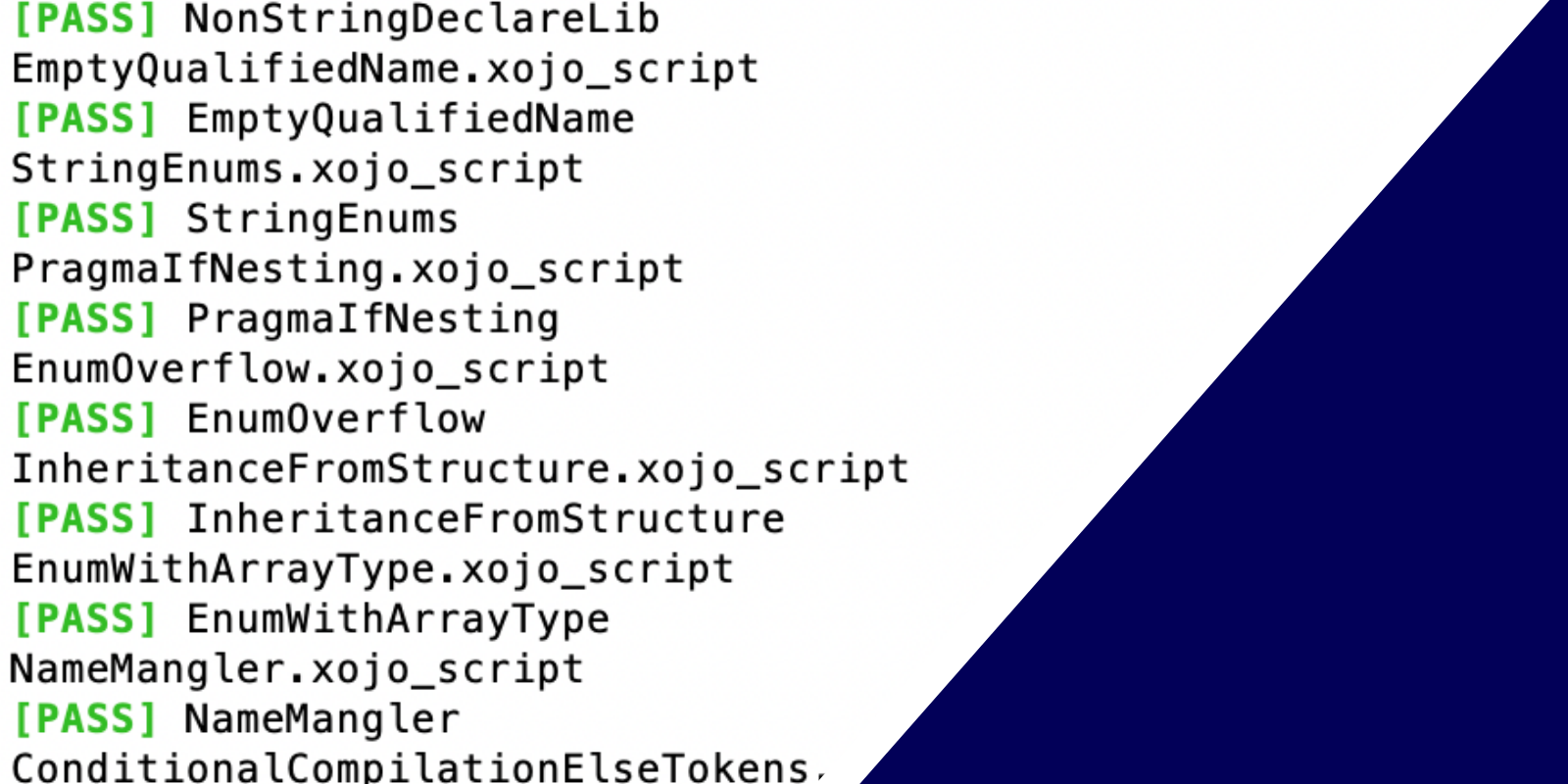The Iterable and Iterator interfaces are a great way to simplify code. For example, what if you want to iterate through dates in a range?
Comments closedTag: Software Development
In this tutorial we will see how to retrieve the file icon using macOS Quick Look technology and the regular file type associated with the selected file, for example JPEG, MOV, PDF, RTF, etc. Continue reading to learn how to achieve this using Declares.
Comments closedThe process of adding new controls to windows (or containers) at runtime has been greatly simplified. Instead of having to deal with control arrays, when you use Xojo 2021r3 or later you can call the new AddControl method on the DesktopWindow (or DesktopContainer) where you want to add the new control. Continue reading and I will show you how!
Comments closedXojo has an extensive testing period where actual users test a pre-release version with their projects but if you are wondering what kind of testing we do internally before each pre-release of Xojo, we have quite a bit of automated testing processes. There are over 400 tests just for the compiler alone. Already, we are approaching 300 tests for our Android framework. In total, across all supported platforms, there are over 2500 automated tests.
Comments closedAs a Xojo web developer probably you’re used to embedding controls inside others, like Rectangles or Containers; but I bet sometimes you don’t get the expected results. Read on to learn a quick fix that uses an extended method to correct a common problem you might run into when embedding menus.
There seem to be a lot of misconceptions about what the MVPs do. Some say it’s just a shiny pin on our lapels, others expect us to be Xojo’s de facto QA. So, what’s expected of us and what do we really do?
Comments closedBeing more efficient means we spend more time on making Xojo better for you. Feedback, our bug and feature tracking system, is a place where we spend a lot of time interacting with you and thus it’s something we very much want to improve. We have three improvements in mind. One will be made today and the other two will come sometime next year.
Comments closedXojo 2021 Release 3 includes SQLite 3.36.0, which has a few new features, such as: RETURNING on DELETE, INSERT and UPDATE commands
ALTER TABLE DROP COLUMN
EXPLAIN QUERY PLAN
Xojo 2021 Release 3 has a few improvements to the Crypto module that you might find useful such as SHA3, BlowFish/TwoFish and CRC-32.
Comments closedAdded to PDFDocument in Xojo 2021r3 is the ability to create PDF Forms (aka AcroForms) in your PDFs. This means that it is possible to add the following Form controls to a PDF: PDFButton, PDFTextField, PDFTextArea, PDFCheckBox, PDFRadioButton, PDFPopupMenu, PDFComboBox, PDFListBox
Comments closed
